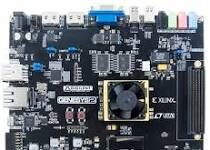Technology is developing at a fast pace and new things are developing each day. Low code is one type of technology that involves very little coding in terms of its use. The development of low code technology involves the usage of visual interfaces along with features like simple logic and drag and drop. The people who have very little knowledge about coding or the development of software can create applications whether it is for business or mobiles.
This technology is becoming the fast-growing and the best alternative for certified and uncertified developers. With the help of a Low code or no-code platform, one can create applications. Such apps meet the demands of business worldwide, development in business, processes of automate, etc.
What Are the Features of Low Code?
Here are some of the features of low code or no code technology:
Tools of Visual Modeling – the visual modeling method while creating an application is superior to using a code developed app. The low code technology has a visual modeling feature which helps in presenting the information which is easy to read. It is beneficial for business users who have zero technical skills as well as certified developers.
Top-Notch Functionality – the functionality of low code is OOTB which means out of the box. The reason behind its functionality is that one does not needs to construct core modules from the beginning.
The interface of Drag and Drop – the ability of low code technology is that it has a feature of drag and drop. It enables a person with a simple and effective development process. The normal person or certified developer feels the benefit of these features while creating an application.
Reusable – the functionality of OOTB with low code technology is that it allows usage of modules that are pre-configured and functioning of applications. All these modules have core functions and thus can be reprocessed for the development of solutions in a quick way.
The low code or no code allows the developers to reprocess the prebuilt or recently designed modules, plug-ins, etc.
Cross-Platform User-friendliness – the feature of the cross-platform is user friendly in all terms. Low code technology allows it to be used on devices which are having operational systems. It allows the operators to construct an application that can work on various stages and devices.
Reporting in addition Monitoring – the applications which are designed using low code technology monitors the whole process which improves its effectiveness. The technology is also beneficial in keeping a check on the performance of various other applications.
Scalability – other features of this technology is its scalability. The technology helps in handling the excess users. The increase in the users can be the result of growth in business.
Lifecycle Management – the tools of low code helps in simplifying and streamlining the stages which are included in the lifecycle of software development. For example, debugging, deployment, etc. The tools help the users in providing information about the applications and their developments. It further gives the liberty to the users to revert back to the last version as well.
Also Read : Sunnxt Coupon Codes for New User
What to Create With the Help of Low Code/No-Code Platforms?
There are certain things which can be created with the help of a no-code platform such as:
Applications of Customer Engagement – the building or creation of enterprise-grade applications. The applications can be starting from customer-facing applications or complicated business processes. This can be done for effective and better customer activities.
Operational Efficient Optimized Application – the creation of the applications can be done that automate the processes. It will help in the growth of effective operations. It benefits businesses with a reduction in costs and the risk of mistakes.
AI bases results – defining and configuration of business logic, data, and the user interfaces for the web apps and other devices.
Business developments – defining workflows, processes of tasks which difficulties to automate operations in various sections.
Reasons to Choose Low Code/ No-Code Platform
Quick to market and faster application delivery – the fast speed of transformation in business, developers look for methods that can help them to be productive and efficient so that they can deliver the apps in a quick way.
Cost-effective – the low code demands for minimal programming experts. It helps in shutting the IT gap for companies. Therefore, this leads to a minimum requirement of IT experts. Low code/no code allows the non-professional developers to make apps without the involvement of IT. Thus, it helps in reducing expensive resources.
Fluid business with IT association – business requires powering the operations which are both time and cost operative. To deliver the applications which are already filled with IT resources companies should cut the gap of IT delivery. This is the best way to be associated with IT and bring a boost to the business.
Conclusion
Low code or no code technology is very efficient and effective in developing applications. It is considered to be beneficial for both professionally skilled developers and regular developers. Companies and businesses are highly benefited by this technology.











